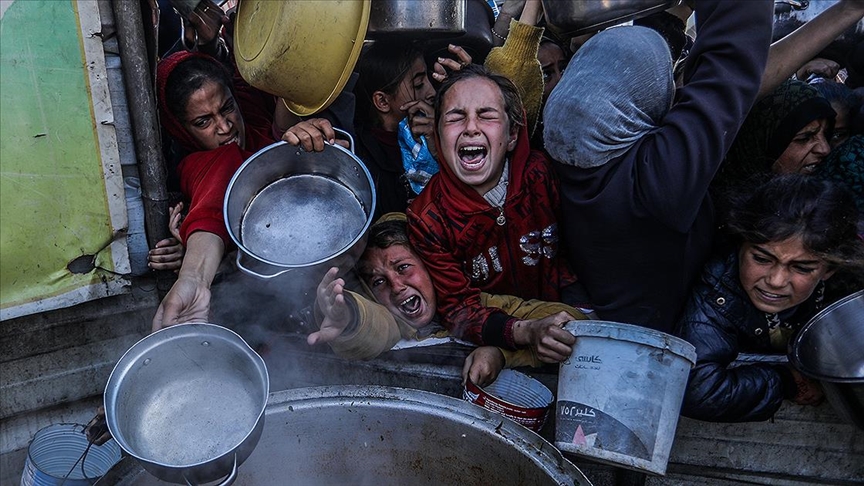
Disaster in Gaza: WHO Identifies Hunger and Food Insecurity as Threats
Disaster in Gaza: WHO Identifies Hunger and Food Insecurity as Threats
World Health Organization (WHO) Eastern Mediterranean Regional Director Hanan Balkhy announced that Gaza, under intense Israeli attacks and blockade, is experiencing one of the worst hunger crises the world has ever seen.
Balkhy, who is in Geneva, Switzerland to attend the 78th meeting of the World Health Assembly (WHA), met with journalists from the Association of Press Officers Accredited to the United Nations (UN) Office in Geneva (ACANU) and made statements on the situations in Gaza and Sudan.
Emphasizing that the situation in Gaza is catastrophic, Balkhy said that since October 2023, there have been more than 1,500 attacks on health facilities in Gaza and the occupied West Bank.
Balkhy also highlighted the worsening food insecurity in Gaza, stating, “One in five Gazans faces hunger.”
She called for the implementation of international humanitarian law, the lifting of the blockade, a ceasefire, and lasting peace for Gaza. “The WHA adopted two important resolutions on Gaza. One of them is a request for WHO to take action and report on the health situation in the occupied Palestinian territories and the occupied Syrian Golan Heights. The second is a request to the WHO Director-General to notify Palestine under the International Health Regulations (2005), enabling Palestine to express its willingness to become a State Party to the charter.”
Balkhy underlined that the situation in Gaza is continuously deteriorating, saying that teams working on the ground have reached “rock bottom.”
“There are at least 15,000 people in Gaza who need to be evacuated for medical treatment,” she said, adding that more than 7,500 people have been evacuated since October 2023.
When asked about the recent entry of humanitarian aid into Gaza — “Last week, for the first time in more than 11 weeks, Israeli authorities allowed a ‘limited’ number of humanitarian aid trucks into Gaza. Has this aid started to reach Gazans? Has WHO been able to deliver its aid?” — Balkhy responded that approximately 400 trucks were cleared to pass through the Kerem Abu Salim (Kerem Shalom) border crossing, but only 115 actually entered Gaza.
She added that no aid has reached the northern part of the blockaded Gaza Strip, stating, “The UN has managed to distribute some wheat flour, baby food, nutritional supplements, and medicines. Two bakeries in the south and central Gaza are now operational. However, no WHO trucks have entered Gaza (since last week).”
Balkhy noted that the entire population of 2.1 million people in Gaza is facing a severe and prolonged food shortage. “Nearly half a million people are experiencing catastrophic hunger, along with acute malnutrition, disease, and death. This has been described as one of the worst hunger crises the world has ever witnessed. The amount of food and baby formula reaching the region is far from sufficient to meet the overwhelming need.”
She also stated that 51 WHO aid trucks are waiting for entry into Gaza but have not been granted access.
“Sudan’s Hunger and Malnutrition Affect 25 Million People”
Turning to the situation in Sudan, where fighting continues between the army and the Rapid Support Forces (RSF), Balkhy said simultaneous outbreaks of polio, cholera, and measles have devastated a health system already damaged by ongoing attacks.
“Access to care is vanishing as violence in Sudan displaces millions and blocks life-saving aid. Hunger and malnutrition now affect 25 million people,” she said.
Balkhy highlighted that only 9.7 percent of the health component of Sudan’s Humanitarian Response Plan has been funded, leaving a 67 percent funding gap for WHO’s response in the country.
She emphasized the urgent need for sustained support to help rebuild Sudan’s health system and stressed the importance of ending attacks on civilians, infrastructure, and health services.